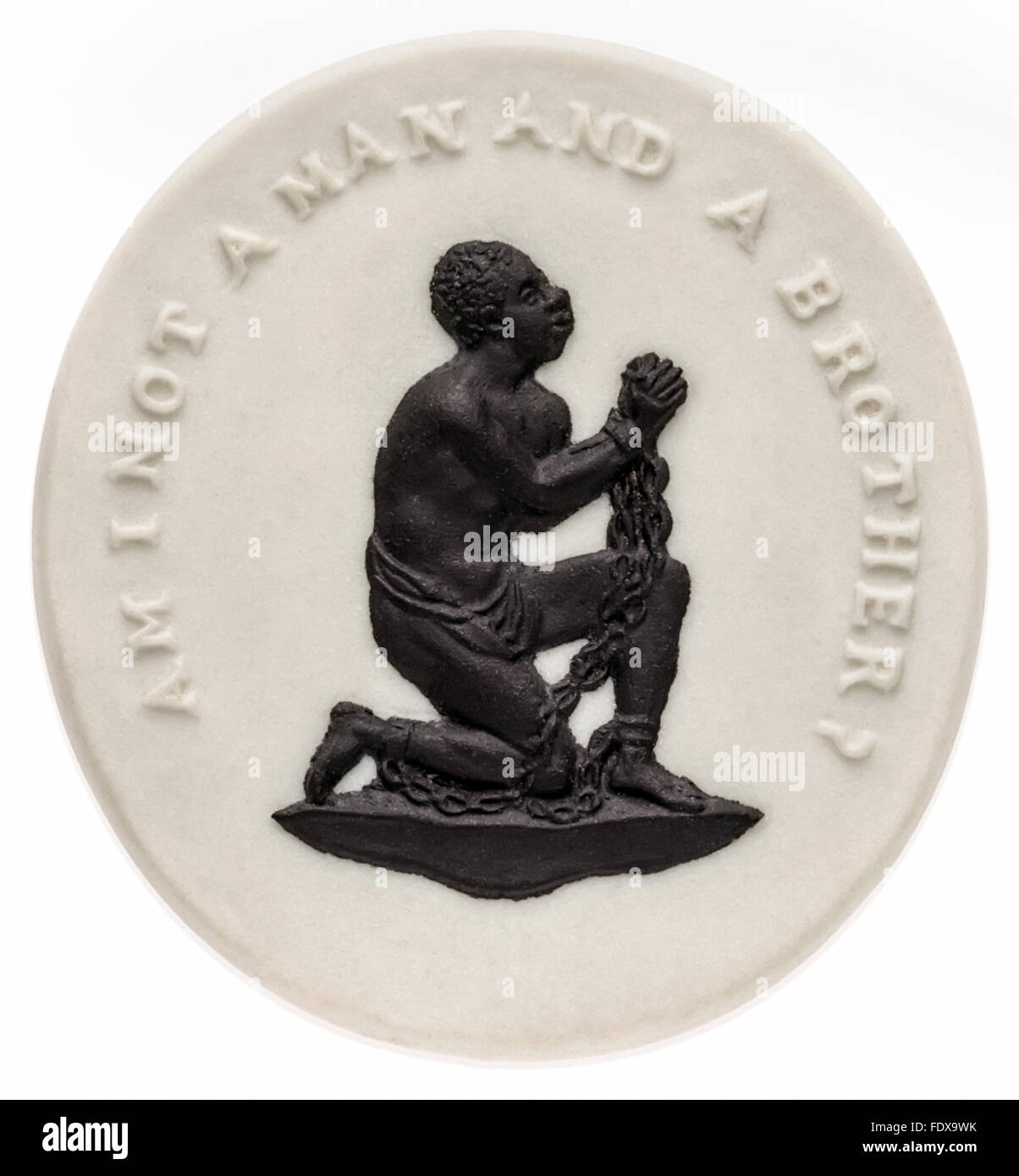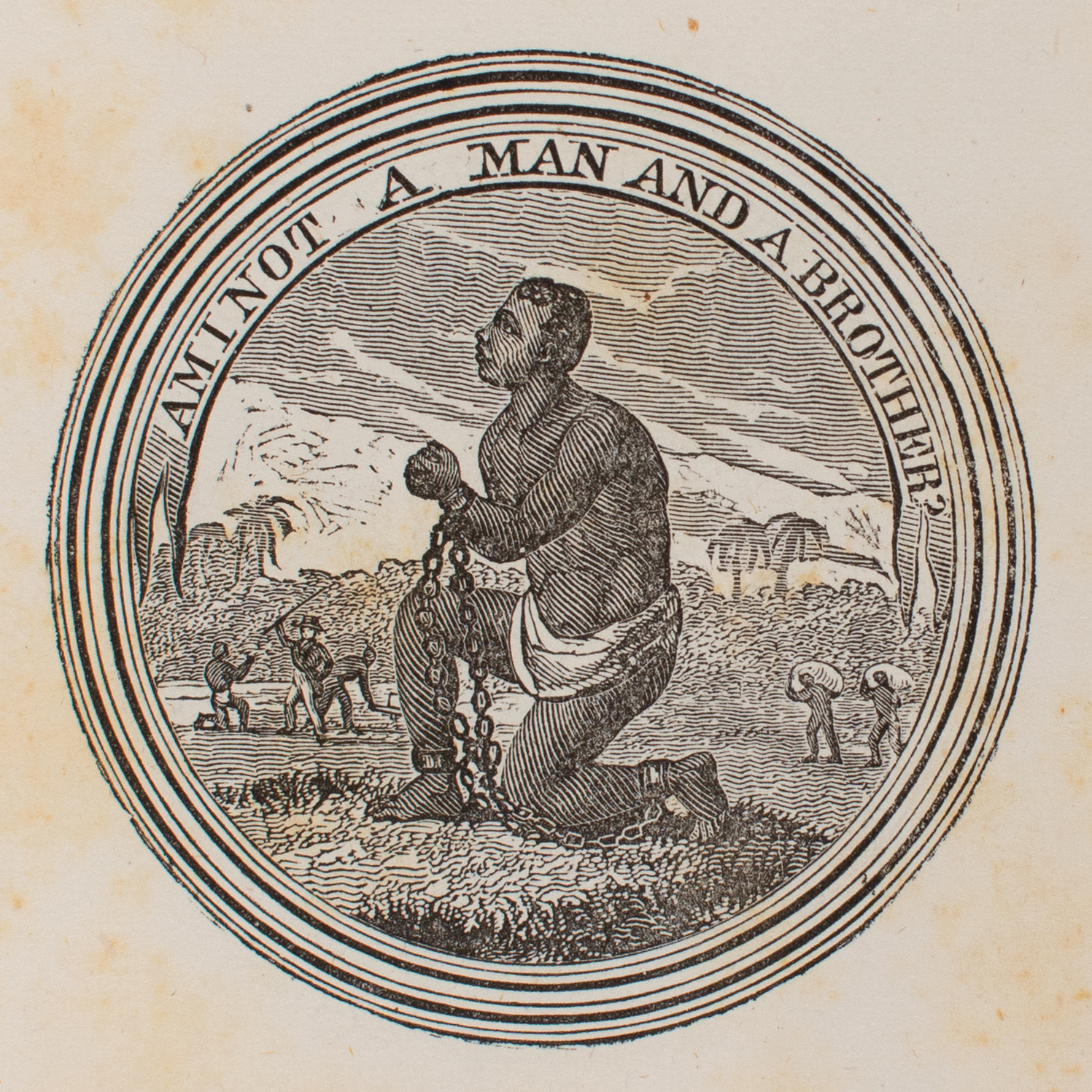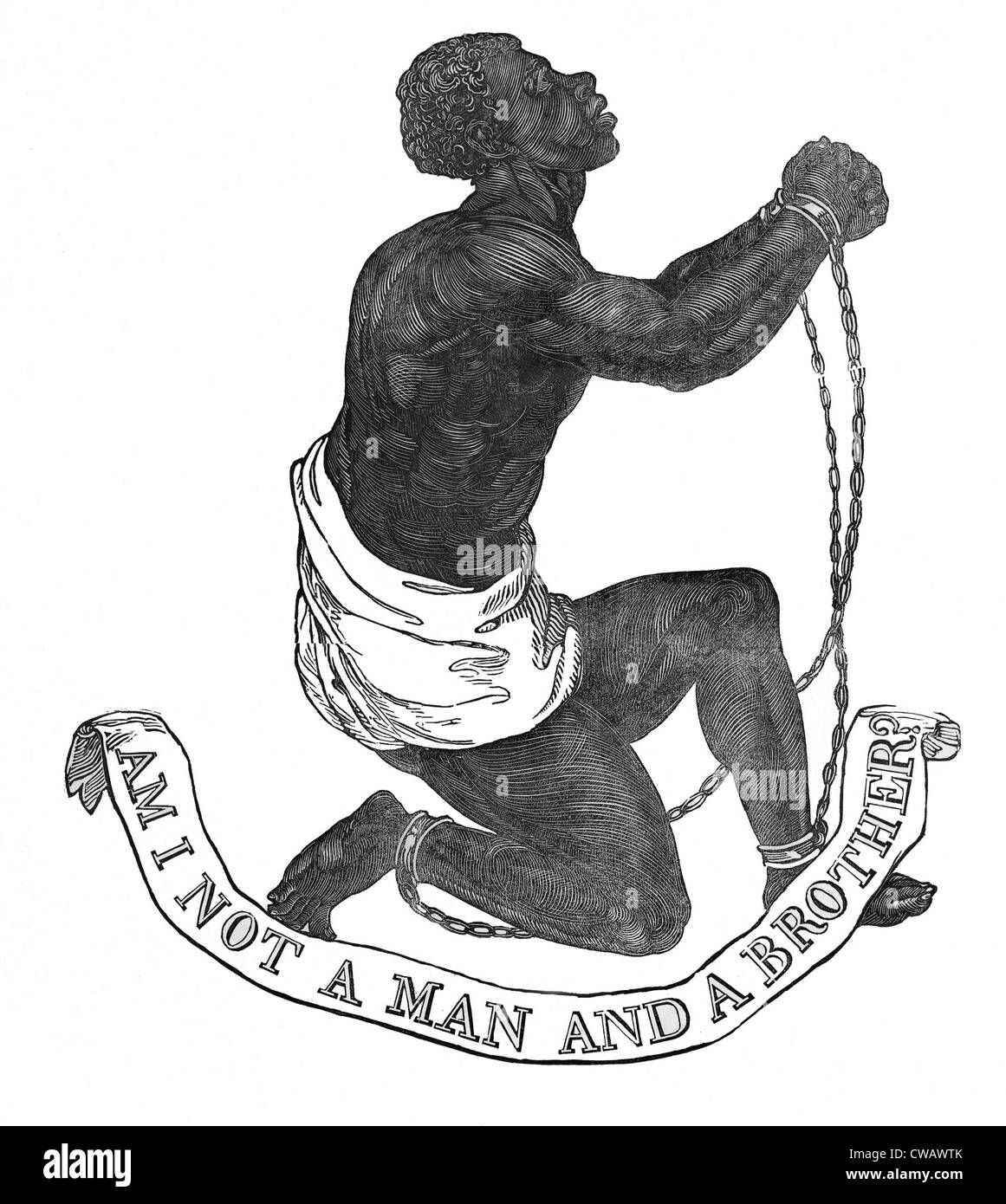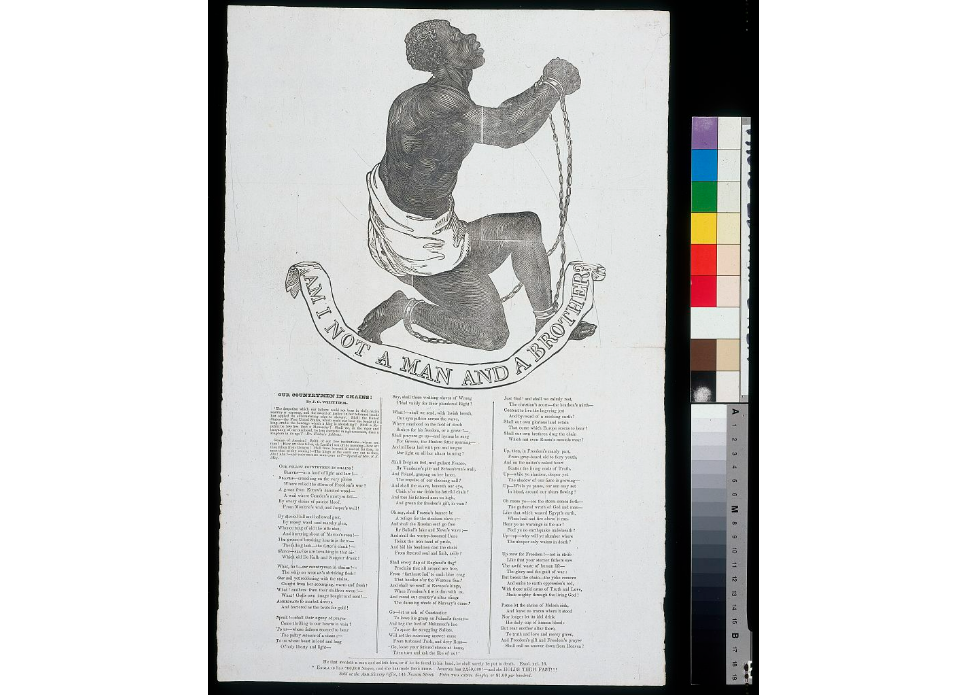8M Rocks History
Josiah Wedgwood. Am I Not a Man and a Brother, 1787 Flickr

In 1787, the Wedgwood ceramics firm issued a cameo medallion featuring a kneeling and shackled Black man with the inscription, "Am I not a man and a brother?" After its adoption as the seal of the London-based Society for Effecting the Abolition of the Slave Trade, the image became an emblem of the antislavery movements in Britain, France, and.
“Am I Not a Man and a Brother?” Antislavery Art in the PMA’s Collection PMA Stories

In one photograph, a black man stands with vacant eyes and a blank expression, his head bowed, shackles round his neck, rain or sweat glisten-ing in rivulets down his naked, muscled chest. In another, the same model, with the same empty eyes and naked chest, raises shackled hands in an 'Am I Not a Man' gesture.
Africans in America/Part 2/Am I Not a Man and Brother Closeup

Wedgwood's design was based on a seal commissioned by the Committee for the Abolition of the Slave Trade on 5 July 1787, showing a kneeling Black man in chains asking, 'Am I Not a Man and a Brother?'. The motif and motto were widely reproduced and disseminated in print, on textiles and ceramics throughout the late 18th and 19th centuries.
(1790s) Am I Not a Man And a Brother Halfpenny Token MS63 Brown Lot 1926 Heritage Auctions
Am I Not a Man and a Brother? While most Americans may recognize Wedgwood jasperware by sight, few know that its creator Josiah Wedgwood ardently opposed slavery. Wedgwood, the English potter, advocated for the abolition of this evil practice from 1787 until the end of his life in 1795. Fewer still know that his efforts extended to America.
Am I not a man and a brother, ? Anti slave trade plaque i… Flickr

1 print : woodcut on wove paper ; 26.7 x 22.8 cm. | The large, bold woodcut image of a supplicant male slave in chains appears on the 1837 broadside publication of John Greenleaf Whittier's antislavery poem, "Our Countrymen in Chains." The design was originally adopted as the seal of the Society for the Abolition of Slavery in England in the 1780s, and appeared on several medallions for the.
"Am I not a man and a brother". Drawer handle with abolitionist plaque, late 1700s r/dragonutopia

The foot of the canvas reads, 'Am Not I a Man and a Brother' a variation on the more common version, 'Am I Not a Man and a Brother'. Although the image and motto were replicated across a variety of artefacts and printed material, this work is only the second painting that is known to exist featuring the motif. While the image became an.
Am I not a man and a brother? Mla Format, Types Of Resources, Tilden, A Brother, New York Public

A man of African descent, kneeling and shackled in chains, poses the powerful question: "Am I not a Man and a Brother?" Employing a stark contrast of black against a white background, here the Wedgwood pottery used its famous jasperware technique to tackle an issue dear to its founders' heart: the abolition of the slave trade.
‘Am I not a man and a brother?’ Wedgwood porcelain medallion circa 1787 designed by William

Description. The image of an enslaved male asking "Am I not a Man and a Brother?" first appeared in the 1780s in England. This broadside poster from 1837 includes a poem by John Greenleaf Whitter called "Our Countrymen in Chains.". Abolitionists used strategies like broadsides to bring attention to the immorality of enslavement.
8M Rocks History

Am I Not a Man and a Brother? Illustration. By: Anonymous Date: 1837 Source: The Library of Congress. About the Artist: The Society for Effecting the Abolition of the Slave Trade was formed in Britain in 1787 for the purpose of distributing anti-slavery literature and rousing public opinion against the slave trade. The primary source image was inspired by their official seal.
"Am I not a Man and a Brother?" · Crossing Borders

They worked to educate the public about the abuses of slavery and sought the eradication of the slave trade. As its official seal, or engraved device and motto, the group chose the image of an enslaved African in chains kneeling with raised hands grasped together. Above the figure is the inscription, "AM I NOT A MAN AND A BROTHER?".
'Am I not a man and a brother'? The seal of the Society for the Abolition of Slavery in England

In 1792, John Kimber, the captain of the Recovery, was tried for the murder of two female slaves while the ship embarked on the infamous Middle Passage. While the cause of the captain's displeasure isn't clear, we do know that he ordered the girl hoisted up by ship's rigging by one leg and flogged, with the process repeated on her other leg.
Am I Not a Man and a Brother?, 1837 State Historical Society of Iowa

Am I Not a Man? And a Brother? (Cambridge, 1788). Peter Peckard (ca. 1718-1797), One of the most widely circulated images of the 18th-century abolitionist movement first appeared in print in this pamphlet addressed to the British Parliament. It had been designed in 1787 as a seal for the Society for Effecting the Abolition of the Slave Trade.
Am I not a man and a brother NYPL Digital Collections

Often referred to as the "Wedgwood medallion," the "slave medallion," or alternatively the "antislavery medallion," Am I Not a Man and a Brother? (fig. 1), as museums more commonly title the emblem today, was first produced by Josiah Wedgwood (1730-1795) in 1787 as a portable black-and-white jasperware ceramic coin—like the one acquired by the PMA—on behalf of the Society for.
Am I not a man and a brother? Library of Congress

African American men participating in the 1968 Memphis sanitation strike carried posters reading "I AM A MAN"—a slogan that has often been traced to the Wedgwood medallion. As Cecelia M. Hartsell writes, "Am I Not a Man and A Brother" was no longer a question, as it had been in the eighteenth and nineteenth centuries—it was a declaration."
Abolitionist Medallion All Works The MFAH Collections

Title: Am I not a man and a brother? Related Names: American Anti-Slavery Society. Anti-Slavery Office (New York, N.Y,) Date Created/Published: 1837. Medium: 1 print : woodcut on wove paper ; 26.7 x 22.8 cm. Summary: The large, bold woodcut image of a supplicant male slave in chains appears on the 1837 broadside publication of John Greenleaf Whittier's antislavery poem, "Our Countrymen in Chains."
“Am I Not a Man and a Brother?” atop John Greenleaf Whittier’s “Our Countrymen in Chains!,” 1837

This halfpenny token, which was manufactured in Birmingham, bears the seal of the Society for Effecting the Abolition of the Slave Trade on the obverse (or front). A pair of clasped hands with the inscription "May slavery & oppression cease throughout the world" appears on the reverse. 2001.87.3462.